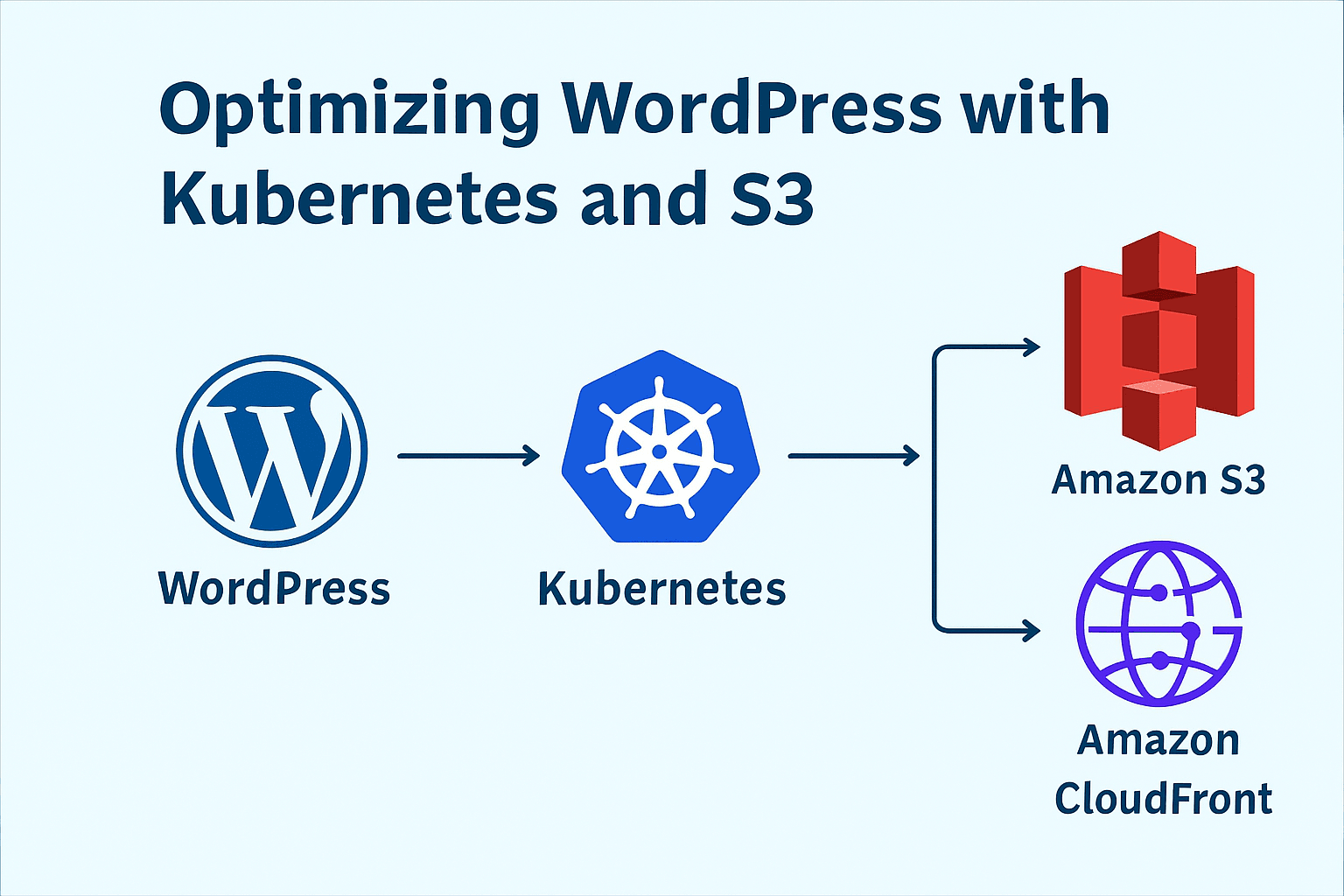Optimizing WordPress with Kubernetes and S3: Scale Smarter, Serve Faster
Scale your WordPress website like an enterprise — faster load times, lower costs, and zero downtime with Kubernetes + S3 + CloudFront.

Nitin Garg
Founder, Zenthos
7 min read · Mon Mar 03 2025

WordPress powers more than 43% of all websites globally — a staggering figure that reflects its flexibility, but also the challenge of keeping it performant at scale.
As your traffic grows, so does the strain: PHP threads max out, databases slow down, and large media libraries start choking your server.
If you’ve already done the basics — updated PHP 8+, cleaned up plugins, and optimized themes — you’re ready for the next leap.
This post explores how to make WordPress cloud-native by running it on Kubernetes, offloading content to Amazon S3, and accelerating delivery through CloudFront.
1. Why Traditional Hosting Hits a Wall
A standard WordPress installation lives on a single VM or shared host. It works — until traffic spikes or a plugin misbehaves.
When CPU and memory climb, your site slows or crashes. The “fix” often means paying for larger servers that sit idle 90 % of the time.
Kubernetes offers a smarter path: scale dynamically based on demand instead of provisioning for the worst-case scenario.
2. The Foundation: Keep WordPress and PHP Updated
Before any migration, ensure the groundwork is solid:
- Upgrade to PHP 8.1 or higher for major performance gains.
- Regularly update WordPress core, themes, and plugins.
- Remove unused components to shrink your attack surface and startup time.
These simple steps eliminate bottlenecks that no infrastructure change can fix.
3. Understanding What to Scale
WordPress’s file structure has three main parts:
- wp-admin – dashboard and admin functions
- wp-includes – WordPress core logic
- wp-content – themes, plugins, and uploaded assets
The first two rarely change; wp-content changes constantly.
That folder is your scaling challenge — it grows with every upload, plugin update, and user action.
4. Enter Kubernetes: Autoscaling Made Simple
Kubernetes turns WordPress into a collection of lightweight containers rather than one monolithic server.
It automatically:
- Spins up pods when traffic increases
- Scales down when demand drops
- Rolls out updates with zero downtime
The result: consistent performance without wasteful over-provisioning.
5. Make WordPress Stateless with S3
For Kubernetes to scale effectively, your WordPress instances must be stateless — no critical data should reside inside the container.
Move wp-content/uploads to Amazon S3:
- Uploads persist independently of pod restarts
- Multiple pods share a single, central media store
- Backups and restores become simpler and cheaper
Plugins such as WP Offload Media handle the upload sync and rewrite URLs automatically.
6. Supercharge Delivery with CloudFront
With media on S3, adding Amazon CloudFront takes performance global.
CloudFront caches static assets (images, CSS, JS) in edge locations close to your visitors, so requests rarely hit your Kubernetes pods.
Benefits:
- Reduced latency worldwide
- Lower bandwidth costs
- Less load on your origin infrastructure
Together, S3 + CloudFront make your WordPress installation behave like a distributed, high-speed network.
7. Don’t Forget Caching
Even a perfectly scaled cluster benefits from caching.
Add a Redis or Memcached layer for object caching and use a page-cache plugin (e.g., W3 Total Cache).
Caching minimizes database queries and accelerates time-to-first-byte — letting your pods handle more traffic with fewer resources.
8. Automate Deployments and Scaling
Use Helm charts or GitHub Actions to deploy containers automatically.
Configure the Horizontal Pod Autoscaler (HPA) to adjust pod counts based on CPU or memory metrics.
Your site becomes self-tuning — scaling up during peak hours, scaling down overnight, and keeping costs predictable.
9. Monitor and Iterate
Set up visibility from day one.
Tools like Prometheus + Grafana or AWS CloudWatch track response times, resource usage, and error rates.
Continuous monitoring turns scaling from a guess into a science.
10. The Business Impact
By running WordPress on Kubernetes and integrating S3 + CloudFront:
- Load times drop globally
- Downtime disappears during surges
- Infrastructure costs shrink through autoscaling
- Maintenance becomes predictable and version-controlled
It’s a direct path to faster sites, happier users, and better margins.
What’s Next
Speed is only half the story — resilience and security complete it.
In Part 2 of this series, we’ll dive into how to secure and harden WordPress on AWS using RDS for managed databases, AWS WAF for DDoS protection, and continuous monitoring to keep your data safe and compliant.
Stay tuned — your WordPress is about to become both fast and fearless.
